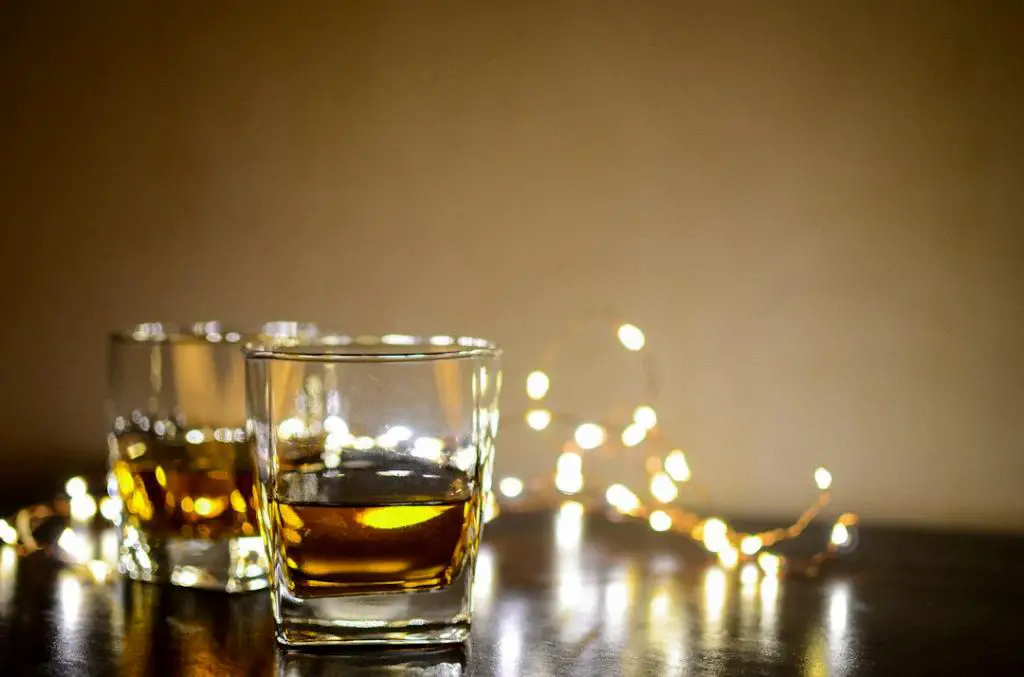When it comes to the question of whether bourbon is clear or dark, the answer is not a simple one. The color of bourbon can vary depending on various factors, including the aging process and the type of barrels used. Let’s delve deeper into this intriguing topic.
Understanding the Aging Process
Initially, all bourbons start as a clear liquid, much like water. However, the aging process is what transforms their appearance into a rich, amber hue that we often associate with this delicious spirit. The primary reason for this color change lies in the interaction between the bourbon and the wooden barrels in which it is aged.
Char and Wood Influence
During the aging process, bourbon goes through a remarkable transformation as it breathes in and out of the charred wood of the barrels. This interaction allows the bourbon to extract flavors, aromas, and, importantly, color from the wood. It’s the char and wood influence that gradually gives bourbon its distinctive dark amber color.
Variations in Aging Duration
While some bourbons are aged for a minimal period, usually a year, resulting in a relatively transparent appearance, most bourbons undergo a longer aging process. The extended duration inside the barrel allows the spirit to extract more color and flavor from the wood, resulting in a darker hue.
The Role of Oak and Vanillin
The type of wood used for the barrels also influences the color of bourbon. The most common wood employed for bourbon aging is oak. Oak contributes to the darkening of the spirit and imparts additional flavors such as vanilla, caramel, and spice. These flavors create a unique taste profile that bourbon enthusiasts appreciate.
Factors Affecting Color Intensity
Several factors impact the intensity of the bourbon’s color. The char level of the barrel, the size of the barrel, and the aging environment all play a role. Bourbons aged in heavily charred barrels tend to exhibit a deeper, darker color than those aged in lightly charred barrels.
Non-Age Statement Bourbons
Some bourbon enthusiasts may come across bottles labeled as “non-age statement” (NAS) bourbons. These expressions do not specify the exact aging duration of the spirit. Consequently, the color of NAS bourbons can vary widely, making it difficult to determine their darkness solely based on appearance.
Bourbon, A Dark and Diverse Spirit
In conclusion, while there are clear bourbons available, a majority of the bourbon offerings are indeed dark in appearance. The aging process, influence of the charred barrels, and the type of wood used are key factors contributing to the color transformation of bourbon from a clear liquid to a beautifully rich and inviting shade of amber.
Appreciating the Color and Complexity
The visual aspect of bourbon is a part of its allure. The deep, dark amber color hints at the complex flavors and aromas that await within the bottle. So, the next time you pour yourself a glass of bourbon, take a moment to appreciate not only its taste but also its captivating appearance.
Experiment and Discover
Now that you know that bourbon can range from clear to dark, why not embark on a tasting journey to explore the different shades and flavors available? Gain a deeper understanding of how the aging process and barrel influence shape the bourbon you enjoy, and discover new expressions that suit your palate.
Bourbon: A Timeless Elixir
In the end, whether clear or dark, bourbon remains a timeless elixir that continues to captivate aficionados around the world. Its color is just one aspect of its captivating allure, inviting us to sip and savor the artistry that goes into every bottle.

